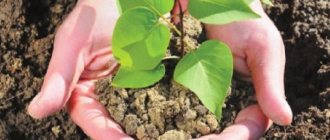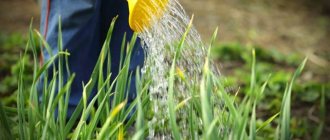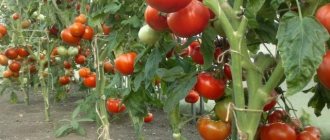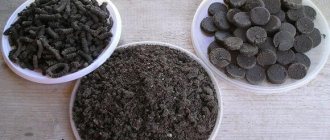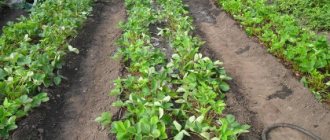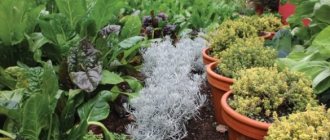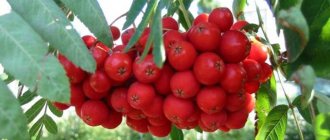With the beginning of spring comes the beginning of the summer cottage season. Gardeners and gardeners are rushing to plant their favorite crops in the garden beds in order to reap a tasty harvest in the fall. To feed plants today there is a huge amount of fertilizers, both industrial and home-made. One of these fertilizers is considered to be ordinary sawdust, which can bring many benefits to plants. How to use sawdust for the garden?
The benefits and harms of sawdust for plants
Sawdust can be used in the garden to mulch the soil - covering the ground with some material to retain heat and protect against diseases.
This material is good because:
- Holds water in the ground.
- Prevents the growth of weeds.
- Repels insects from fruits (for example, strawberries and wild strawberries).
- Provides the ability to preserve the plant in winter.
- It is an excellent fertilizer.
Sawdust will be more beneficial if you keep it in compost for a couple of years or add fertilizer to it.
Like any fertilizer, wood shavings have their pros and cons.
The benefits are:
- similar capabilities of sawdust and manure, and at the same time saving money;
- preventing weed growth;
- conservation of water in the soil;
- natural soil aeration;
- preventing the development of diseases.
The harm lies in:
- inability to use sawdust without preparation;
- earth oxidation;
- the possibility of infecting plants with diseases when using questionable substances.
Possible harm
Wood waste increases the acidity of the soil - the degree of impact depends on the type of wood (coniferous trees acidify the soil the most). This is a relative disadvantage, since some plants prefer an acidic environment. This category includes: carrots, tomatoes, pumpkin, cucumbers, spinach, potatoes, rhubarb, radish, turnips, rosemary, sorrel.
Some crops react negatively to it - the ability to acidify the soil really becomes a disadvantage. The second unfavorable factor is that sawdust absorbs nitrogen present in the soil. This element is necessary for plant development; its deficiency slows down the growth of garden crops.
Wood processing waste containing formaldehyde or other harmful chemicals cannot be used for gardening needs. Material obtained from wood infected with pests/diseases is also contraindicated.
Fresh wood waste cannot be placed directly above the root system - when rotting, the temperature rises, which can negatively affect plant growth. As a fertilizer, they can only be used in a rotted form - during decomposition, microflora useful for garden plants is activated, harmful properties are neutralized (the ability to draw nitrogen from the soil and acidify it).
How to get rid of harmful properties?
Rotted wood waste has no disadvantages, but the natural process takes a long time (about 2 years). You can speed it up by adding alkaline material (ash, chalk, slaked lime - optional) to the sawdust in a ratio of 1:10. For each 10-liter bucket of the mixture, prepare an aqueous solution of nitrogen fertilizer from 200 g of sodium nitrate or urea and 10 liters of water. The mass is mixed, placed in large thick black bags, tied, and left for 3-4 weeks.
Another way to neutralize harmful properties: making compost. Wood particles (1 bucket) are loaded into the compost pit and watered with a urea solution (200 g/10 l). Vegetable waste (an arbitrary amount) is also added there. A couple of buckets of damp garden soil are poured on top (this allows microorganisms and worms to do their work more actively).
The compost pit is covered with film. Humidity is constantly monitored - it is recommended to periodically add hot water and immediately cover with cellophane. What is it for? Such treatment will not only maintain optimal humidity for overheating, but will also destroy weed seeds that fall along with plant debris. The mass should stand for at least a month.
The duration of using compost to fertilize the garden depends on how depleted the soil is. Poor soil should be fed annually. If the land is not very depleted, then fertilizing can be repeated every other year.
How to use it correctly in the garden
Wood shavings are both the cheapest fertilizer and the most accessible. Due to a number of positive properties, they are very often used in the garden in spring and autumn.
in autumn
Wood shavings are an excellent method of insulation, so there are several ways to use them in the fall:
- To insulate plants: fill thick bags with wood shavings and cover the plants. Bags should be made of cellophane; it will protect the sawdust from moisture.
- For crop storage: many crops are better preserved in wood shavings. Wooden boxes are used, into which the shavings are poured.
- To fertilize the site: after harvesting, the beds should be fertilized with compost from wood shavings.
in spring
You can start using wood shavings in early spring:
- Like soil for seedlings: preparing soil for planting. To do this, mix sawdust and peat, add river sand or soil. It is recommended to add double superphosphate, potassium sulfide, and ammonium nitrate to the resulting mixture.
- To germinate seeds: place the rotted substance in a box, moisten it, scatter the seeds on top, and add a layer of shavings on top. Maintain moisture and wait for germination. Then replant the seedlings in regular soil. Potato tubers can be germinated in a similar way.
- For sowing seeds: small seeds can be sown by mixing with sawdust to reduce material consumption.
- To create beds: wood shavings perfectly insulate beds, remove excess moisture, and provide additional sources of nutrition. It is necessary to dig a trench, fill it with wood shavings and ash, and cover it with earth on top.
- Mulching: Mulch can be placed under bushes, on beds, and around trees. This will not only feed the plants, but also retain moisture and provide protection from weeds.
- To plan the site: you can lay any paths using sawdust.
Reviews
Alexander, Berdsk : For the third year now I have been using sawdust in my garden, since I have direct access to the material - I work on a sawmill. I mainly use them for sprinkling the rows between potatoes - there are significantly fewer problems with the Colorado potato beetle. I add the rotted wood pulp to the compost pit and use it as fertilizer in the fall when digging.
Elena, Yeisk : I have been using sawdust for mulching garden crops for several years now. I mix a bucket of wood shavings with 2 tbsp. ash, 3 tbsp. calcium nitrate and moisten well with water. I leave the mixture for a couple of weeks, covered with cellophane. Only after that I use it. This mulch has a positive effect on productivity.
Marina, Rostov : I used rotted sawdust as mulch - I was very disappointed. I didn’t notice any particular benefit, besides, there was a wireworm infestation and I had to spend time removing the pest from the area.
How to prepare for application to the soil
To properly use wood chips in the garden, they need proper preparation. Preparation depends on how the sawdust will be used.
How to turn sawdust into compost: nitrogen enrichment
Wood shavings can be used for compost.
There are 3 options for creating a compost pit:
- sawdust-mineral;
- sawdust-organic;
- mixed.
Creating sawdust-mineral compost involves using: 50 kilograms of pine sawdust, 1.5 kilograms of urea, 400 grams of double superphosphate and 750 grams of potassium sulfate. All mineral components should be dissolved in water, soaked in sawdust and placed in a compost container. The maturation process takes about 6 months.
Creating sawdust-organic compost involves the use of birch sawdust and 100 kilograms of manure. The elements are mixed, then they must be placed in a compost container. The maturation process takes about 6 months.
Creating mixed compost involves using oak sawdust and manure in equal parts. The maturation process takes about 6 months.
Composts, regardless of their type, must be laid in the spring so that the fertilizer is ready by autumn.
Mixture with manure: application
Wood shavings have the most suitable form for mixing with manure, and also retain a beneficial effect on the earth for a long time.
There are two ways to prepare the mixture:
- mixing fresh ingredients;
- mixing rotted components.
It is best to take fresh components, leave them in place to rot, and wait for humus to rot after 5 months.
The rotted components can be mixed both on the ground, pouring them in layers and processing them with a turner, or immediately applied to the fields, but also in layers.
Before mixing, the area should be sprinkled with soil to protect the soil from oxidation. There are no specific proportions for combining manure with sawdust.
The most popular ways to add the mixture to the ground:
- mulching;
- feeding;
- underground heating.
Advantages of using a mixture of sawdust and manure:
- accessibility, ability to buy anywhere;
- cost savings;
- environmental safety of use;
- versatility and balance of beneficial properties and substances;
- waste disposal method.
However, there are a number of disadvantages:
- Fertilizer production takes quite a long time;
- large volumes of ingredients;
- dependence on weather conditions;
- unpleasant odor;
- the possibility of introducing infections to plants.
Thus, a mixture of manure and sawdust is a cheap and effective fertilizer that improves the properties of the soil and replenishes useful substances. It provides a second life to industrial waste, but is beneficial only when used correctly. Mistakes can lead to unsuitable soil and harm to plants.
Using wood chips as fertilizer
Prepared wood shavings in themselves are a good top dressing. But there is a way to use fresh sawdust in the garden as fertilizer - build a compost heap and lay it down to rot.
In compost
methods for making compost from sawdust :
- Manure is an expensive pleasure if you don’t have your own animals. Therefore, you can increase the amount of raw materials based on manure using wood residues. Since both components are nitrogen-containing, dry leaves, hay, and straw are added to the compost so that it is evenly saturated with air and ripens faster.
A hundredweight of manure must be added per cubic meter of wood waste. The mixture matures over the course of a year. If you need to make compost from sawdust quickly, then use biological accelerators - bacteria.
- Instead of manure, you can use urea or bird droppings. In the summer, the pile is covered with film on top to prevent precipitation from getting in and washing away nutrients. water as they dry out to maintain the same level of humidity, at which bacteria have the opportunity to actively process organic matter.
- Instead of manure, you can add kitchen scraps. This is especially true in the fall, when people make canned food and eat vegetable peelings, rotten fruits, and herbs. Per quintal of waste add 10 kg of wood ash, 2.5 kg of urea, 2 quintals of shavings, 5 buckets of water.
- You can compost sawdust using mineral fertilizers - potassium sulfate, superphosphate, ammonium nitrate and lime. A bucket of shavings contains 30 g of phosphate, 40 g of saltpeter, 120 g of slaked lime. After ripening, fertilizer is applied in 3 buckets per square meter.
The main condition for rapid maturation is regular shoveling of the substrate. Compost is produced by aerobic bacteria that require air. The more it is ingested, the faster microorganisms will multiply and process the raw materials faster. It is customary to stir the mixture once every 2 weeks.
As mulch
Use sawdust in the garden to mulch strawberries. This helps protect the berries from rotting, especially in rainy weather. Ripening strawberries do not fall on the ground, so they are collected clean and undamaged.
If you mix fresh manure with fresh shavings and cover the roots, you can avoid spring frosts. In such a mixture, earthworms quickly infest and accelerate rotting.
Eukaryotes eat organic matter and release coprolites into the soil - waste products that enrich the soil with humic acids. The berry harvest with this feeding will be 2 times greater.
If sawdust is used as a mulching fertilizer, then rotted shavings are added to rotted manure, and fresh wood is added to fresh manure.
Seeds germinate in wet shavings, but they must be quickly transplanted into the ground, because the wood will not provide them with nutrients and the plants will die. Seedlings can survive in humus if superphosphate, nitrogen and potassium are added.
Coniferous sawdust and litter
Coniferous waste is not as nutritious as deciduous shavings, but it is quite suitable for restoring soil aeration. The method for preparing pine sawdust is the same as for all other types of wood.
In order not to waste time and effort, you can simply scatter pine litter or shavings on the site in a layer of 3–5 cm and leave it for the winter. Wood inhibits moisture loss, so soil microflora will actively develop in a humid environment.
This will attract earthworms - they will gradually process the mulch layer and loosen the soil surface. It will be much easier to plant something in such an area in the spring.
Considering that coniferous plant residues rot on their own very poorly, before storing them in a compost heap, they are kept in the air for some time - on average 1 year.
Birch shavings
An interesting proposal for using birch sawdust as fertilizer in the country: fill large plastic bags with it, make holes and populate it with fungal spores - honey mushrooms or oyster mushrooms. The fact is that the mycelium of these mushrooms loves only the substrate of deciduous trees, quickly masters the environment, and the mushrooms grow faster.
The mycelium shavings must be fresh and not contaminated with mold. It is pre-boiled for 2 hours, then dried and the mycelium can be populated. It is important to monitor the humidity - if there is too much water, mold can grow in the bags. Humidity is checked by squeezing in your hand: if a couple of drops of water are released, it means it is optimal for planting.
In order for the mycelium to breathe, it is necessary to make holes in the film, otherwise the mycelium will die without air.
Mulching with sawdust and shavings
You can mulch with wood shavings:
- fruit trees;
- raspberries;
- currants;
- blueberries;
- lingonberries;
- grape;
- bulbous flowers;
- winter garden crops.
Using wood chips as a covering material has its pros and cons.
Pros:
- the ability to retain water in the soil;
- a significant reduction in the amount of weeds in the beds and in the boundaries;
- the ability to prevent overheating and freezing of the soil;
- ensuring good air conductivity of the soil;
- cheap fertilizer.
Minuses:
- soil acidification;
- reducing the content of nutrients in the soil;
- A significant waste of time for the maturation of the mulch material.
Preparation of mulch from wood shavings: mix sawdust with 200 grams of urea, add 10 liters of water, cover with film. After 20 days, add to the ground or peat. The material is ready for use.
Bottom line
Fertilizer from sawdust is used when digging the soil, making compost and mulching seedlings. The beneficial effect of sawdust is based on attracting soil organisms, whose vital activity enriches the fertile layer with substances beneficial to plants. Wood waste is used both to retain moisture in the ground and to absorb excess water during heavy rains.
Can sawdust in the garden cause harm? If used incorrectly, they can harm the plants. For example, fresh tree shavings draw nitrogen from the ground that is beneficial for plants, and using sawdust in dry areas will kill plants. If you compost with manure and do not stir the mixture regularly, mold may grow in it. Therefore, when working with wood waste, follow the rules and recommendations. In this case, the sawdust material will serve you well, and you will reap a good harvest from your summer cottage.
How to use for winter shelter of plants
Mulching or covering garden plants with wood shavings for the winter, as well as covering them with polyethylene bags containing the same substance, is an excellent way to ensure their preservation during winter days.
Some root vegetables can also overwinter under sawdust: daikon, root parsley, carrots. When frost occurs, the tops of wintering root crops are cut to a height of 5 cm. Next, you need to loosen and hill up each plant, and mulch the bed with a thick layer of sawdust. The crop must be dug up in early spring before the leaves begin to grow.
Coniferous and deciduous – which is better for the garden?
On numerous forums, users often ask the question - which sawdust is best for the garden and is it possible to use coniferous or other wood waste?
When used correctly , any sawdust brings many benefits, but improper use can be harmful and completely destroy the crop, making the land unsuitable for growing some plants.
Any waste from sawing wood makes the soil more acidic and also draws nitrogen out of it , so it is necessary to add fertilizers along with them to compensate for these changes.
Sawdust, both completely or partially rotted and fresh, improves the structure of the soil, which is especially important on clay soils. On particularly heavy soils consisting of solid clay, it is necessary to add sand along with sawdust .
Fresh wood waste becomes very hot during the process of rotting, which leads to an increase in soil temperature and overheating of plant roots, so fresh sawdust should not be laid close to the roots .
Therefore, there is not much difference between coniferous and deciduous sawdust - when used correctly, they bring many benefits, but mistakes can be harmful and lead to dire consequences. Most of the negative reviews about the use of sawdust in the garden are caused by their incorrect use, while those who used them correctly are satisfied with the results.
Conifers
However, it is important to understand the differences between hardwood and softwood sawdust, as well as how the latter affects the soil.
In most cases, pine sawdust refers to pine or spruce sawdust as the most accessible, as well as the cheapest . Pine and spruce are used for most carpentry and carpentry, so sawdust is everywhere.
Due to their high resin content, fresh pine and spruce sawdust than deciduous sawdust, and also draws more nitrogen from the soil.
Improper use of pine and any coniferous sawdust causes much more damage to the garden than deciduous sawdust.
Due to the high content of resins, humus from pine sawdust contains more microelements necessary for plants , therefore it is better suited for balanced feeding.
If pine sawdust is placed in furrows, ditches or holes, then due to the greater need for nitrogen for complete decay, it is necessary to increase the amount of nitrogen-containing fertilizers.
In addition, pine sawdust acidifies the soil more strongly , so you need to increase the amount of slaked lime or ash.
It is not only possible, but also necessary to use pine and other pine sawdust in the garden , taking into account their characteristics and compensating for the negative impact on the land. Only in this case will they bring much benefit.
Deciduous
Due to the lower resin content, humus from leaf waste is slightly less balanced, but it rots faster . In addition, deciduous sawdust is less accessible, so dried and crushed branches and branches of fruit trees are often used in the garden.
When using such material, be careful, because among the dried branches there are often sick or affected by various pests.
Such sawdust cannot be used, because bacteria will not be able to process pests and pathogens, so fertilizer made from them can infect your plantings .
We have prepared links to discussions about the use of sawdust in the garden on various forums:
- Forumhouse.
- Forum dacha.
- Miracle garden.
- Mastergrad.
All this allows us to conclude that those sawdust that are easier and cheaper to bring to the garden are . Whatever wood waste you use, you will still have to use other fertilizers along with it.
In this article Where to get sawdust, we talked about the places where you can buy sawdust waste, and also talked about various ways that allow you to save on their purchase.
Only an integrated approach, in which the negative impact of wood on the soil is compensated, will lead to improved plant development, as well as more abundant and high-quality fruiting .
How to germinate seeds
Wood waste is very often used to grow a number of crops. This method allows the plant to develop a root system in a short time and ensures rapid emergence of seedlings.
To germinate seeds, boxes are needed, as well as clean wood shavings. The shavings are doused with hot water and then placed in boxes. Seeds are laid out on top of the sawdust, and another layer of shavings is placed on top. The box is closed with film. After the first shoots appear, the film is removed and the box is exposed to light.
Another option for using wood shavings is growing mushrooms. The substrate is prepared from hardwood sawdust and straw. All components are soaked in boiling water for 5-6 hours, after which the mass is wrung out and placed in layers in a plastic bag. Mycelium of the mycelium is introduced between the layers. Holes are created in the bag for the mushrooms. After 40 days you can harvest.
Other uses for sawdust
I’ll tell you about other useful uses in a summer cottage:
- Covering for paths. This application allows you to “kill two birds with one stone”: the compressed ones inhibit the germination of weeds, and the paths with a natural embankment remain clean until late autumn. For the same purpose, they are sprinkled between the rows, not forgetting to prepare them for mulch according to the instructions.
- Component of seedling substrate. Rotted sawdust is suitable for these purposes - I add it to the soil under tomatoes, eggplants, peppers and cucumbers. If you only have fresh ones, first soak them in a urea solution (40 g of fertilizer per bucket of sawdust). A simple substrate diagram: garden soil, sawdust, lowland peat in a ratio of 1:1:2. Then for 10 kg of the resulting mixture - 40 g of potassium sulfate, 40 g of double superphosphate, 15 g of ammonium nitrate, ½ cup of ash.
- Growing mushrooms. An excellent substrate for oyster mushrooms is sawdust from hardwoods such as maple, oak, birch, poplar and aspen. Wood material is mixed with straw 3:1. Before this, they are prepared: soaked for 3-7 hours in warm water. It is important that the temperature remains at 60° C throughout the entire soaking time.
- Pest repellent. Resinous substances effectively repel the Colorado potato beetle. Therefore, I sprinkle this woody material between the rows of the potato plantation.
Now you know several methods for the beneficial use of sawdust on your site. Remember that they should be prepared before use, otherwise you can seriously damage the plantings.
Sawdust for plants
Depending on the crop, sawdust will be useful at a specific time of year and in a certain form.
- Pine sawdust is used for potatoes They warm the soil well, saturating it with nitrogen, and retain water. They are usually used when planting, placing a handful of raw materials mixed with ash and humus in each hole. And in order to get an early harvest, potatoes are germinated in rotted sawdust before planting (the tubers are completely hidden in them). After 14 days they are taken out and planted in the ground.
- For tomatoes and peppers sawdust is recommended as mulch in summer or autumn. They are placed between the rows or directly under the bushes.
Sawdust is also used to increase the yield of strawberries, wild strawberries and raspberries.
- For melon crops, sawdust compost is used from spring to autumn. You can add it to the soil when digging an area for these crops or spread it between the rows.
- for carrots and beets , especially in spring, as this can lead to deformation of the root crop.
- to increase the yield of strawberries, wild strawberries and raspberries . But it is better to choose conifers. In this case, sawdust is used as mulch under bushes and between rows.
When using sawdust for different plants, you need to take into account that when fresh, they can greatly change the acidity of the soil. So it is better to use rotted sawdust, compost or humus.
How to properly mulch?
Preparation for mulching must be thorough. It is necessary to prepare humus and then use it in the first half of summer. This will help saturate the soil not only with useful substances, but also protect it from the evaporation of large amounts of moisture. By the end of summer, the fertilizer will completely take root in the soil and mix with it thanks to the loosening and work of earthworms. You can mix the mulch with the soil yourself if a large amount has been applied. If this is not done, then in the spring the fertilizer layer will not allow the soil to thaw evenly.
Do you use folk signs in gardening?
In most cases, mulch is placed in the passages between plants. In certain cases, you can apply mulch under the plants themselves. Raspberries and cucumbers love this method of fertilization.
Germination of seeds
If we talk about a short period of time, then sawdust is a good substrate for germinating seeds - its looseness provides the plant with space for the development of the root system. However, the woody material does not contain nutritional components available to the sprout, so when the first leaf forms, the seedlings must be moved into the soil.
To form seedlings, you need to take a small container half filled with wet sawdust. The seeds are laid out in it at an equal distance from each other, and a layer of dry sawdust is added. This is necessary to maintain the required amount of moisture.
If you have the opportunity to regularly check the humidity of the substrate, you can dispense with the last layer. The container is placed in an open plastic bag and placed in a warm place.
Sawdust for fertilizing and sprouting potatoes
To germinate potatoes and their seedlings, you need to use sawdust. The action plan is as follows:
- two weeks before transplanting the crop into the soil, it is recommended to pour sawdust into wooden boxes in a layer 10–15 centimeters high and place potato tubers on top;
- a layer of substrate of 3–5 cm is placed on top;
- The optimal ambient temperature is +20 °C.
Sawdust for fertilizer
- as soon as the sprouts rise to a height of 6–8 cm, it is important to water the potatoes and then transplant them into the prepared holes, covering them with soil on top;
- the soil can be preheated using cling film;
- The area with planted potatoes is covered with hay and cling film.
In the greenhouse and on the beds
An increase in soil fertility in greenhouses and beds is achieved through a whole range of measures, which includes:
- creating favorable conditions for the development of seedlings and adult plants;
- filling the soil with nutrients;
- protection of plants from negative natural influences;
- preventing the growth of weeds and pests;
- restoration of the chemical composition of the soil in winter.
The uniqueness of sawdust is that it can be used to perform each of these operations. After all, germinating seedlings in sawdust is more effective than in ordinary garden soil, due to the structure being more suitable for these tasks.
Adding wood sawing waste to the soil mixture improves its characteristics and also makes it more fertile. Therefore, I use the soil mixture not only for germinating seedlings, but also to fill the holes and grooves in which the seedlings were planted.
Summer and winter mulching not only protect plants from negative natural influences, but also fight weeds and slugs, thereby reducing crop losses caused by these factors.
In addition, the correct use of winter mulch and green manure allows you to grow the same crops on the site without loss of yield.
You can read more about this integrated approach in the article Sawdust in beds and greenhouses.
It is equally important to choose the right sawdust for certain actions, as well as to correctly carry out the necessary agrotechnical measures. A mistake made when choosing wood waste, or incorrect implementation of some activity can lead to serious problems, including crop loss and soil infertility.
Therefore, we recommend that you carefully read the article What can be mulched with sawdust, in which we discussed all these issues in detail.
Application in the garden
A blooming and abundantly fruiting garden is a worthy decoration of any summer cottage.
Therefore, summer residents are looking for any ways that will help increase the productivity of garden trees, as well as make the garden area more beautiful.
Due to the fact that tree roots are deep, they require much less traditional mulching, which protects the soil from moisture loss .
Indeed, at such a depth, the loss of water due to heating of the soil surface has almost no effect on the roots and does not deprive the tree of nutrients.
Mulching trees and bushes with wood sawing waste improves the structure of the soil, making it looser, so the roots receive more nutrients.
The result of such care for garden bushes and trees is more abundant fruiting.
In addition, the right choice of color, and in some cases painting, sawdust makes the garden area more beautiful and elegant, and also emphasizes the most important areas .
In addition, filling the paths with waste from sawing wood allows you to walk on them even during heavy rains, without soiling your shoes and clothes with soggy soil.
Such paths not only look neater and more natural than those laid with crushed stone or paved with tiles, but also supply the ground around them with nutrients that are released by sawdust.
For more information about all issues related to the correct use of sawdust in the garden, read the article.
Use as bedding and for toilet
A dacha is the most suitable place for raising animals for milk and meat, as well as various pets.
After all, a city apartment is not a very suitable habitat for large dogs, rabbits and other pets that are kept at home for the sake of companionship.
All pets have one very significant disadvantage - the need to relieve natural needs, and the excrement has an extremely unpleasant odor.
Therefore, all pet owners need some kind of product that will not only eliminate the odor, but also allow the animal or bird to comfortably cope with its needs.
In stores, such products are positioned as cat or dog litter, and purchasing them, especially if the pet is quite large, is not cheap. After all, the larger the living creature, the more filler it needs, and the contents of the tray or toilet have to be changed every 2-3 days.
Sawdust is at least not inferior to most fillers that can be bought in stores, and in terms of price-quality ratio they have no competitors at all.
Read more about using wood cutting waste as litter for pets here (Sawdust for pets).
When breeding poultry or meat and dairy animals, it is very important to provide them with conditions that allow them to comfortably cope with their needs. After all, most of these animals do not have access to the concept of a toilet as the only place where they can empty their bowels or bladder. Therefore, they need high-quality bedding that:
- absorbs liquid from excrement;
- will slow down the appearance of unpleasant odor;
- will reduce the rate of reproduction of pathogenic bacteria;
- will make it easier to clean the area where animals or birds are kept;
- will prevent excrement from getting on the fur or feathers.
Fresh sawdust fully meets these requirements.
Moreover, waste from sawing coniferous wood is preferable because the resin that impregnates it is a natural antibiotic that suppresses the proliferation of pathogenic bacteria.
In addition, thanks to their own strong odor, they will be able to partially suppress the unpleasant smell of excrement if for some reason you delay cleaning the room a little.
After cleaning the room, a mixture of sawdust and excrement can be used as one of the components of high-quality compost, which, after rotting, turns into an excellent fertilizer for any garden and vegetable crops.
For more information about this method of using sawdust, read the article (Sawdust bedding for pets).
In addition, waste from sawing wood can be used as a filler for septic tanks or dry closets, because the processes occurring in human and animal feces are the same.
Therefore, the same bacteria that turn manure or droppings into excellent compost and eliminate unpleasant odors will also successfully cope with human feces.
What crops can be mulched with sawdust?
Sawdust mulch is suitable for all crops. Mulching cucumbers in a greenhouse is done to protect against evaporation and pests. Coniferous raw materials are used as biofuel for warm beds, filled with infused manure, then sprinkled with earth. Sawdust is poured into raspberries around the bushes, protecting the roots from freezing.
Mulching onions and garlic prevents soil loss of moisture and cracking of the soil. Coniferous material is suitable for carrots; it will protect the plants from damage by carrot flies. Mulching of roses is carried out in the fall to protect the bushes from freezing: the surface of the earth around the plants, as well as the bushes themselves, is covered with sawdust, covered with a piece of film to prevent moisture from penetrating inside, and sprinkled with earth. You can cover grapes and clematis in the same way. This is the so-called “dry” method of shelter. Large shavings can also be placed in planting holes when planting these crops; they will protect the roots from the winter cold.
You can mulch tomatoes, strawberries, raspberries, and all berry bushes with sawdust. In the case of shrubs, moisture and nutrients are retained under such cover for a long time, as a result of which the bushes do not need to be replanted for several years.
Mulching rows of cabbage with sawdust will help reduce the frequency of watering, retain soil moisture, especially in the heat, and, accordingly, get larger and juicier heads. Mulching of potatoes is carried out after hilling, the shavings are scattered along the rows.
We recommend reading
The use of urea (urea) as a fertilizer in the garden and in the garden
How to use chicken manure as fertilizer in the garden
Instructions for use of powder and paste of the biological product Fitosporin-M
Instructions for use of growth stimulator Epin extra for plants
What are the benefits of sawdust in the garden?
Sawdust has many properties that are necessary and useful for gardeners. For example, they are a good soil loosener, which improves its structure and prevents cracking and crusting. In addition, sawdust is able to absorb and retain liquid, which makes it possible to use it where it is necessary to reduce humidity. Sawdust can insulate, disinfect, decorate, and protect.
Finally, let's not forget that sawdust is wood waste. That is, real organic matter, which is processed by soil microorganisms into nutrients necessary for everything growing on earth. And like any other organic matter, sawdust should not be sent to landfills, but to garden beds.
